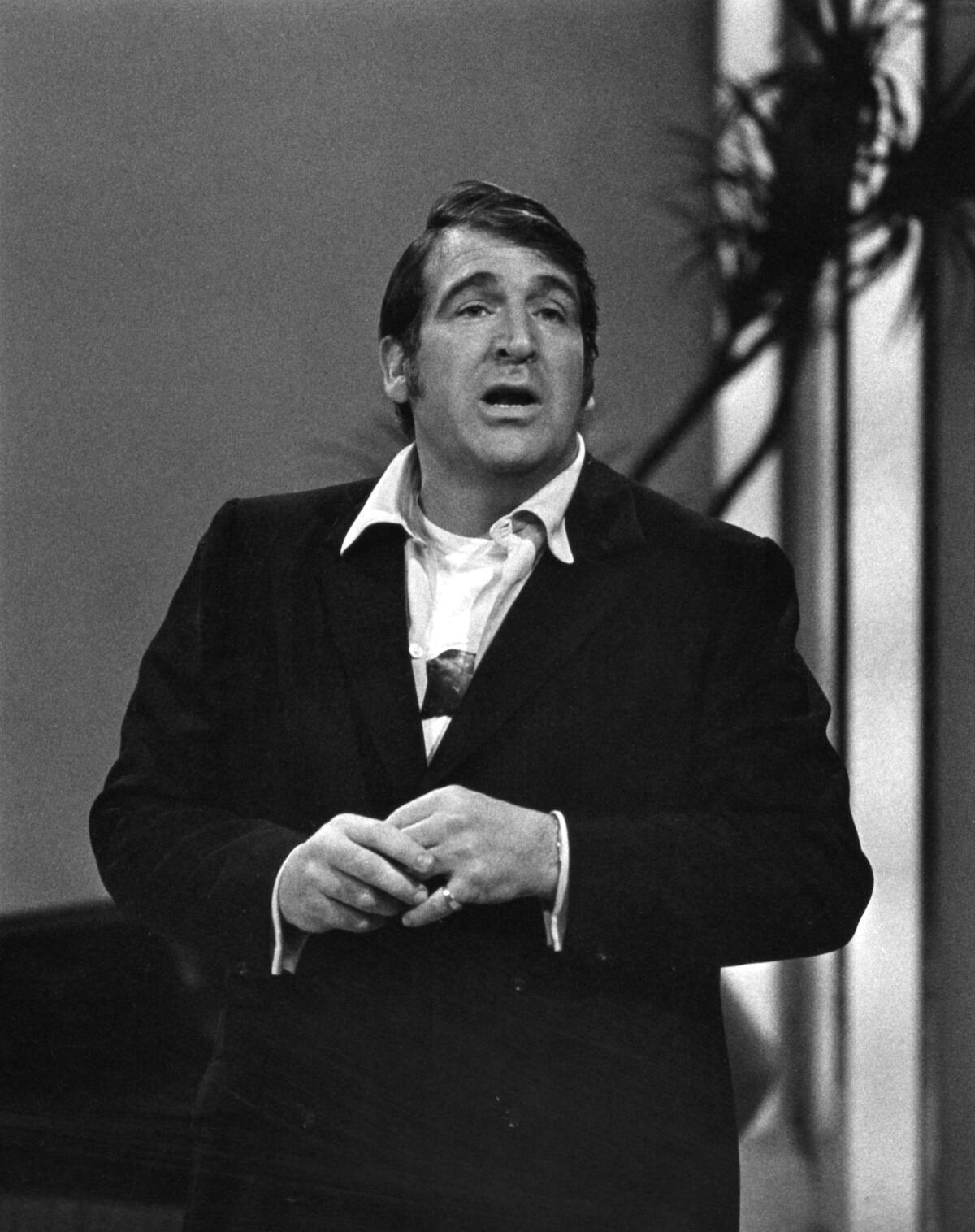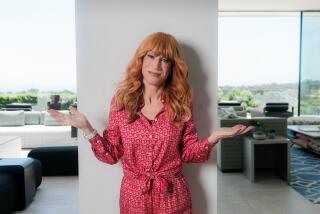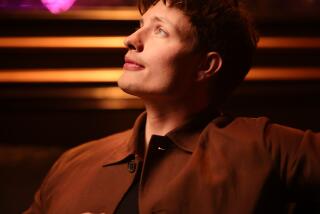Comedian Shecky Greene, known for Las Vegas act and late-night show routines, dies at 97

Legendary stand-up comedian Shecky Greene — known for his rambling routines, several headlining runs in Las Vegas and constant presence on the late-night talk show scene — died at his home in Las Vegas on Sunday, his widow, Marie Musso Greene, confirmed to The Times. He was 97.
According to Musso Greene, the Vegas headliner died of natural causes.
“It was fun,” Greene’s wife of 41 years told the Las Vegas Review-Journal of what it was like being married to the comedian for all those years. “He always made humor out of whatever he could. He made you laugh and feel good. It was a happy time.”
Greene’s fast-talking narrative style of comedy was often featured on “The Tonight Show Starring Johnny Carson” and “The Ed Sullivan Show” during their TV heyday in the ’60s and ’70s. Although he enjoyed mainstream success and was very well-compensated for it, Greene was also known as a comedian’s comedian in certain sectors of the comedy world.
Because he spent most of his professional life playing clubs, and because the name Shecky fits right in with all those generic Jackies and Joeys who started out in the Borscht Belt before they went on to careers in movies and television, Shecky Greene tends to get lumped in with the band of postwar vacation resort tummlers that history and a new generation have shunted aside.
The free-form performer, some of whose routines have aged better than others, rose to fame as a comedian in the 1950s. Born Fred Sheldon Greenfield in Chicago in 1926, he served in the Navy during World War II, and enrolled in junior college but left when he was offered a two-week gig at the Prevue Lounge in New Orleans. (He stayed for six years, until it burned down.) After showcasing his stand-up across the Midwest, New Orleans and Miami, Greene landed his first Las Vegas show in 1954, opening for comedic singer and actor Dorothy Shay at the now-closed Last Frontier hotel and casino on the Vegas Strip.
Greene was known as an all-purpose entertainer of the old school who told jokes and stories, sang and seemed to have an endless store of the kinds of observations that made the dreariness and confusion of life not only bearable but also funny. He would also do most anything for their delectation. Once, during a Florida gig early in his career, he did a body flip that landed him flush on his knee, which blew up to the size of a cantaloupe.
He parlayed that early success in Sin City into a five-year headlining act at Vegas’ famous Tropicana Hotel starting in 1957. Greene would go on to co-headline a show at the MGM Grand Hotel alongside Dean Martin in 1975.
While he thrived onstage, Greene privately struggled with drug, drinking and gambling addictions.
Greene was a compulsive gambler who shrugged off the loss of pot loads of money. He could afford it, he reasoned, given his stratospheric weekly earnings of $100,000 in the ’70s. The only other stand-up comics pulling down six figures at the time were Don Rickles, Buddy Hackett, Bill Cosby and Johnny Carson.
So he hasn’t headlined in years. So he’s almost 80. So he’s on Zoloft. Shecky Greene can’t stop performing.
Before long, his escapades became as legendary as his shows. There was the time Greene plowed his car into the fountain in front of Caesars Palace in Las Vegas, and while security guards surrounded him under towering plumes of water, he rolled down his window and said, “Hold the spray wax, please.”
(Or that’s how he told it onstage. As Greene told The Times for a profile in 2005, “The cops came, and I went. I told Buddy Hackett about it. He gave me the line about the spray wax, and I put it in my act.”)
There was also the night when Carson, in his drinking days, chased Greene out of Hackett’s house during a party. Greene eventually plunged into Hackett’s swimming pool fully clothed, clambered out and squished his way home. The next day, he remembered nothing but feeling remorseful — he knew from experience that he was a mean, obstreperous drunk.
Later in his life, the brash orator found himself too anxious and depressed to return to the stage. He later shared publicly a diagnosis of bipolar disorder.
“You feel you’re in a pit, a hellhole,” Greene told The Times in 1994. “There’s nowhere to go. You can’t get out. You feel alone.”
“It was a big effort just to get him to walk,” his wife, Musso Greene, told The Times for the same piece. “Socially, we couldn’t go out. He couldn’t drive. If a restaurant was too dark, he’d leave. If a restaurant was too light, he’d leave too. I had to warn our friends to expect anything. You never knew when a panic attack was going to hit.”
Shecky Greene loves horse racing. He even had a horse named after him. And unlike the comedian, it was a winner at the track.
Greene returned to the stage in Las Vegas in 2009 after an extended time away from performing.
Aside from his stand-up career, Greene also found success on television and in film. In 1981, he played the role of Marcus Vindictus in Mel Brook’s comedy classic “History of the World, Part I.” He was also featured in Ron Howard’s 1984 Tom Hanks-led film, “Splash.”
Showing his performing range, Greene appeared in the World War II drama series “Combat!” in the ’60s. He also had guest appearances in a range of comedy series through the years, including “The Love Boat,” “Laverne & Shirley,” The Fall Guy,” “Roseanne” and “Mad About You.”
Greene is survived by Musso Greene, his third wife, as well as his daughters, Dorian and Alison.
Former Times staff writer Lawrence Christon contributed to this report.
More to Read
The biggest entertainment stories
Get our big stories about Hollywood, film, television, music, arts, culture and more right in your inbox as soon as they publish.
You may occasionally receive promotional content from the Los Angeles Times.










